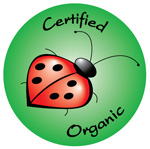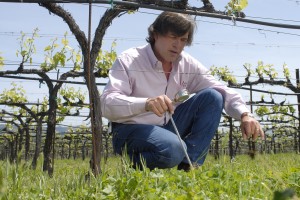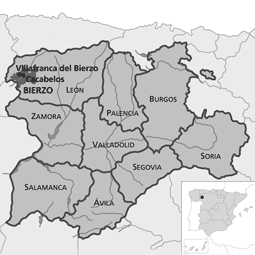If you’re confused about Champagne and Sparkling Wine you’re in good company. Questions come up at nearly every event we host, regardless if sparkling wine is even one of the wines we’re sharing.
- Can you call this Champagne?
- What is Cava?
- What about Prosecco?
Today we take things sip by sip, exploring Champagne, Cava, Prosecco, Sekt, and Crèmant sparkling wines in turn – so you will not only know the differences between them, but also which style is best suited for the occasion at hand. Let's dive in!
Champagne | Champagne, France
ONLY sparkling wine from Champagne, France is Champagne, and can be called (or labeled) as such. The northern most region in France, this incredibly temperamental, cool-climate locale with its chalky soils ensures grapes with very high acidity – exactly what you’re after when it comes to producing exceptional bubbly.
There are also only 3 legally permitted grape types that can be grown and included in a Champagne wine: Chardonnay (white), Pinot Noir (red) and Pinot Meunier (red). These can be blended (most often) or fly solo.
In addition to the tricky, cool climate (i.e. while you want ripping, fresh acidity, you also need grapes to ripen enough to give the wine some balancing fruit-mojo), the technique employed in making Champagne (méthode champenoise) is incredibly labor and time intensive. Winemakers must induce a second fermentation inside the bottle which, suffice to say, takes many, many steps over an extended time including, at the end, freezing the neck of the bottle to later disgorge unwanted sediment (key for flavor development, but not desired in the final product). The result is a bright, complex, layered and toastier/creamier style of wine.
Often Champagne is Non-Vintage (NV). Winemakers prefer to blend fruit from different harvests to achieve the “House Style” for which they are known. Only in exceptional vintages will wine be dedicated to a vintage year bottling.
INSIDER TIP. While most of the Champagne we drink is dry (Brut), there are sweeter styles available. Extra Dry is actually slightly sweeter than Brut, followed by demi-sec and then, rarely, doux.
Cava | Penedès, Spain
Cava is the Spanish term for their own style of sparkling wine, and named after the cave cellars where the wine was aged.
It came into being in 1872 when Don José Raventos found himself tromping through Champagne, France and encountered their specialty. He was rightfully fascinated. Soon enough he had decided to employ the traditional French méthode champenoise technique at home, but wanted to put a uniquely Spanish spin on it.
First up, he used local, indigenous varietals: Macabeu (the dominant grape), Parellada and Xarel·lo – all white grapes – contribute their own unique characteristics to the blend and create a uniquely Spanish sparkler. (Producers today are also permitted to use Chardonnay, Pinot Noir, Garnacha and Monastrell in the blend.)
Next was his approach to aging: Cava is aged for only 9 months on the lees (this technique helps give Champagne its famous toasty character).
The differences go on, but the important thing is the result: Cava is a cheery, slightly less robust, citrusy/fruity, sometimes slightly nutty alternative to Champagne.
INSIDER TIP. Wander off the ubiquitous Cristalino or Friexenet paths and you’ll often find even more value, while supporting smaller producers.
Prosecco | Veneto, Italy
Venetians, for their part, turn to Prosecco – aka Italian sparkling wine – daily. And whether you know Prosecco yet or not, you’ve probably noticed it is certainly an affordable bubbly option.
What makes it different than its counterparts? This wine is named for the largest proportion of grapes used to produce it, Prosecco. It is widely considered more straightforward, lemon-limey and leaner than traditional Champagne.
Why? It’s snappy flavor and texture result because it is made using a different approach than its French and Spanish cousins. The Charmat method ensures the secondary fermentation (necessary to “trap” the CO2 and create the bubbles) occurs in large, pressurized tanks rather than in the bottle. This means the wine is oxygenated and bottled “on demand,” without a long aging regiment. And, since the wine is made in batches if you will, rather than bottle by bottle, this helps keep the price low.
INSIDER TIP: Gravitate toward Prosecco if a sparkling cocktail is on the menu, too. It’s perfect for both sipping solo and for adding a little unobtrusive sparkle to your cocktail recipe.
Sekt | Germany & Austria
Fun Fact: Germans drink more Sparkling Wine per capita than any other country. They also produce the most variety of options, all under the larger umbrella term “Sekt”.
Their bubbly can be made with any method described already herein. Naturally, pricier selections are made in the traditional méthode champenoise while cheaper offerings are bottled with the Charmat method. Stylistically you will taste the characteristics that each of these respective approaches imparts – leaner for the latter and toastier and richer for the former.
They can also be made from a wide selection of grapes, with the grape-type used also helping to dictate the flavor experience in the final product. E.g. Riesling Sekt tend to be more zippy with trademark high acidity; Pinot Blanc and Pinot Gris deliver a fuller-bodied, rounder experience; and Pinot Noir rosé styles deliver more tang and berry fruit, with pretty aromatics.
While less widely known/imported, a German (and Austrian) sparkling wine experience is quite diverse – and certainly worthy of your interest.
INSIDER TIP: Use your wallet as your guide. Spend more than $15 to avoid the plonk.
Crèmant de [Fill-In-The-Blank] | Non-Champagne Regions, France
You didn’t think France was having all of the sparkling wine fun in just one of its wine growing regions, did you?
Truth be told, French Crèmant is perhaps our favorite alternative to Champagne. Most often made in the same traditional method, each region in France has go-to varietals. These same grapes are pressed into service for their sparkling wines. For example, the Loire Valley is known for their Chenin Blanc. So Crèmant de Loire tends to be made from Chenin. In Burgundy they are world-famous for Chardonnay and Pinot Noir, so that’s what you should expect in bubbly forms.
INSIDER TIP: Artisanal or small production winegrowers that decide to produce sparkling wine make a BIG commitment. They need the resources – economic and otherwise – to do so. If they are going down this path, they are doing it for a reason. In our experience, passion pays. Crèmant wines are an uber-affordable alternative to Champagne, with many exceptional selections falling in the $16-$22 range.
What’s the moral of the story?
No matter which country floats your boat, sparklers are not just for toasting and gifting; with the variety of styles available worldwide they can be for every day. And perhaps they should be! With their essential, naturally high acidity, sparkling wine pairs superbly with any cuisine. Plus, they’re just F-U-N.

















 The market for organic produce has really picked up steam in the last few years. Consumers looking for organic wines, however, are often confused by what the labels really mean - and the deal with sulfites, for that matter.
Yeah, it's true, there are different laws and standards depending which country is producing the wine. But at the end of the day you can break things down pretty simply. Head over to
The market for organic produce has really picked up steam in the last few years. Consumers looking for organic wines, however, are often confused by what the labels really mean - and the deal with sulfites, for that matter.
Yeah, it's true, there are different laws and standards depending which country is producing the wine. But at the end of the day you can break things down pretty simply. Head over to  It's only natural what with Earth Day last week eco-friendly wines are on the brain. Eco-friendly, what? You heard me! Ecofriendly WINES. It's a new-ish buzz word encompassing the many (confusing) categories of wine including biodynamic, organic and sustainable wines, among others. We'll be tackling these various terms and attempting to break them down into bite size pieces on Wicked Local. Today we're starting with "sustainable" wines.
It's only natural what with Earth Day last week eco-friendly wines are on the brain. Eco-friendly, what? You heard me! Ecofriendly WINES. It's a new-ish buzz word encompassing the many (confusing) categories of wine including biodynamic, organic and sustainable wines, among others. We'll be tackling these various terms and attempting to break them down into bite size pieces on Wicked Local. Today we're starting with "sustainable" wines.
 Were you nerdy about wine in 2006? If so, you probably read a few
Were you nerdy about wine in 2006? If so, you probably read a few